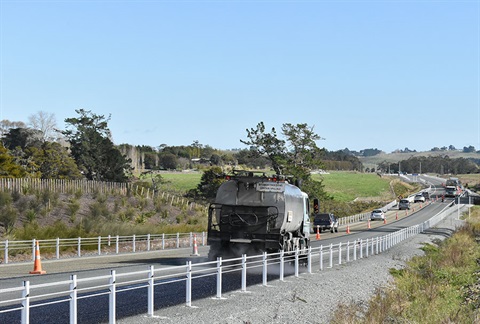Fewer queues, more detours
Published on 06 November 2024

Contractors will be trying out new ways to manage traffic during roadworks this summer, in a bid to get more work done faster.
Whangarei District Council’s Infrastructure Committee Chairman Simon Reid says a big programme of work is planned for Council roads and State Highways this summer “and it will mean total closures of some roads from time to time".
“We want to try out something different this year to see whether it lets us get through entire jobs faster, and meaning less time for drivers sitting in queues.
“Where possible, and when there is a safe detour available, we plan to close the road completely and direct drivers along the detours while we work on the full width of the closed road, hopefully for a shorter period overall.
“In the past, we have closed single lanes during this work and put traffic along the open lane using stop / go controls at each end. Then, when the first lane is done, we’ve opened it under stop / go control while we repair the second lane.
“On one hand, the traffic has continued moving through the site during the works, even if slowly. On the other hand, we think it may have been taking more time overall to do both sides of the job separately.
“The time saving with closures means that the crews could be moving off and setting up for the next job, while the good weather lasts.
“Everyone in the Whangārei District knows how unpredictable the weather can be, so every sunny hour of daylight should be used to its fullest extent.
“We also know people get frustrated sitting in stop / go queues, and it’s hot and dusty for the crews as cars go through the worksite, not always observing the speed limit. With a bit of luck, the detours will mean people can stay on the move, the crews can make the most of the empty road and we’ll get more done overall. Usually, the roads will be closed after the morning peak and reopened that night.”
Councillor Reid said summer is the best time of year to do roadworks because the weather is dry and the days are long.
The different roading layers adhere well to each other in this situation, curing faster and providing a surface that is longer wearing and needs repairing less often.
Fewer repairs mean fewer delays, better driving over the course of the year and lower costs for the ratepayers.
What to expect: We will be using fewer cones, stop / go and traffic lights, and will be closing roads to carry out repairs, maintenance and rebuilds.